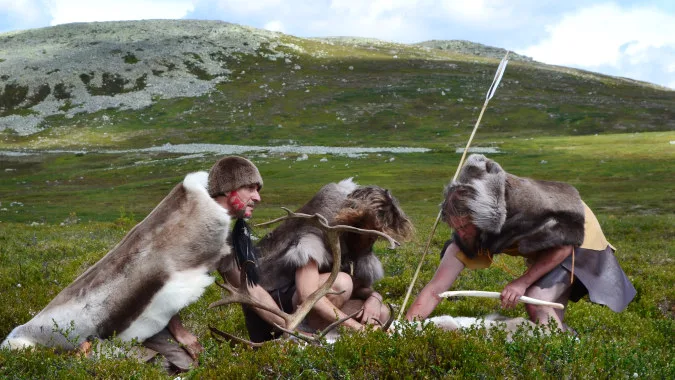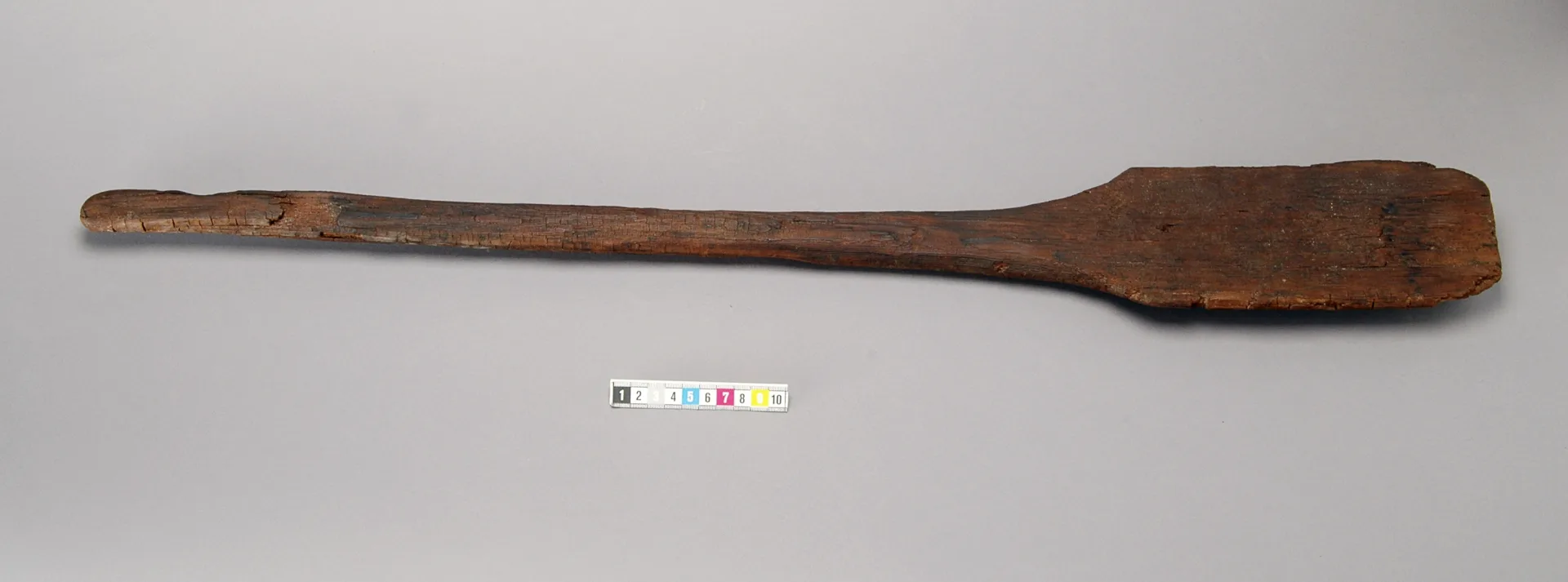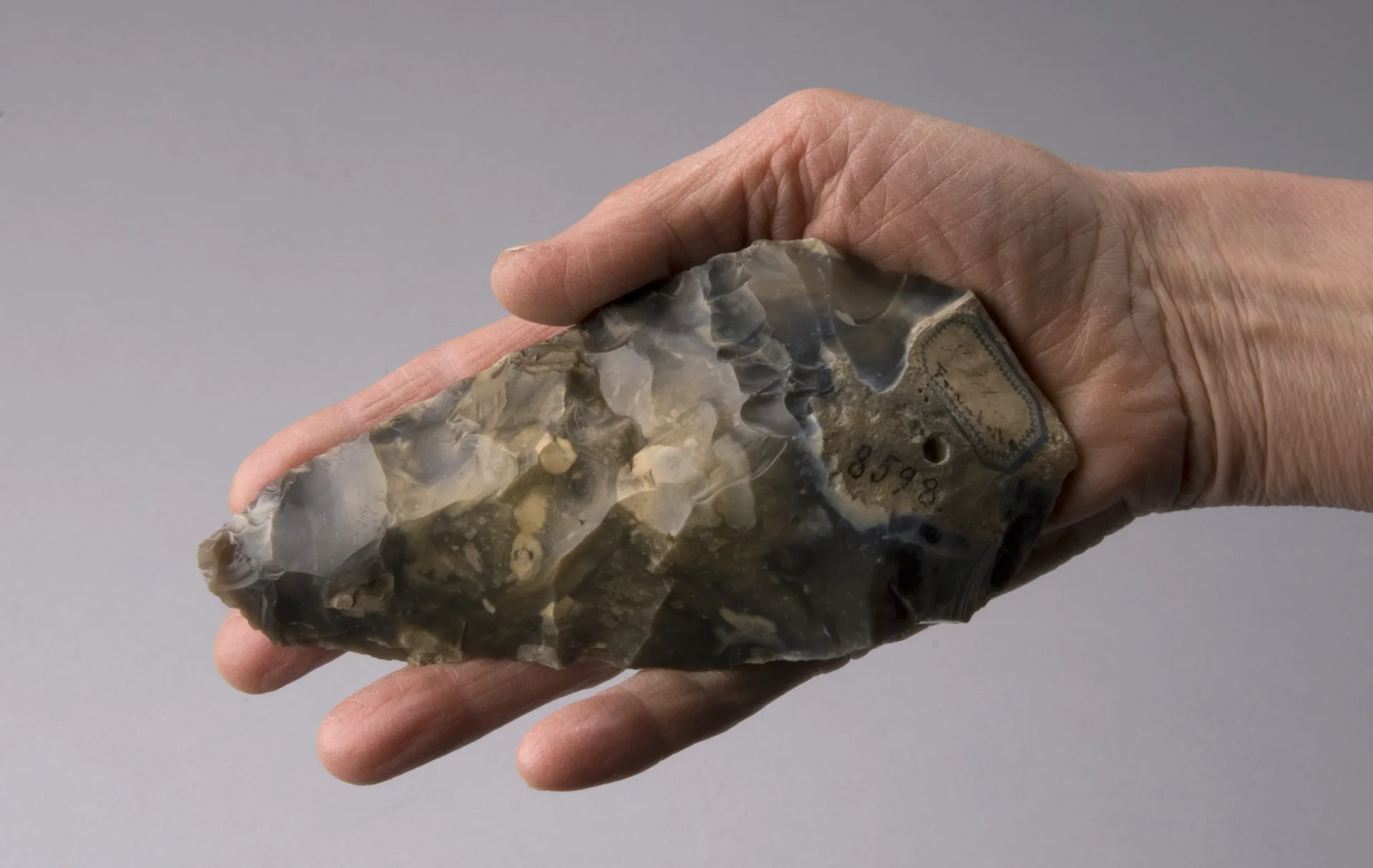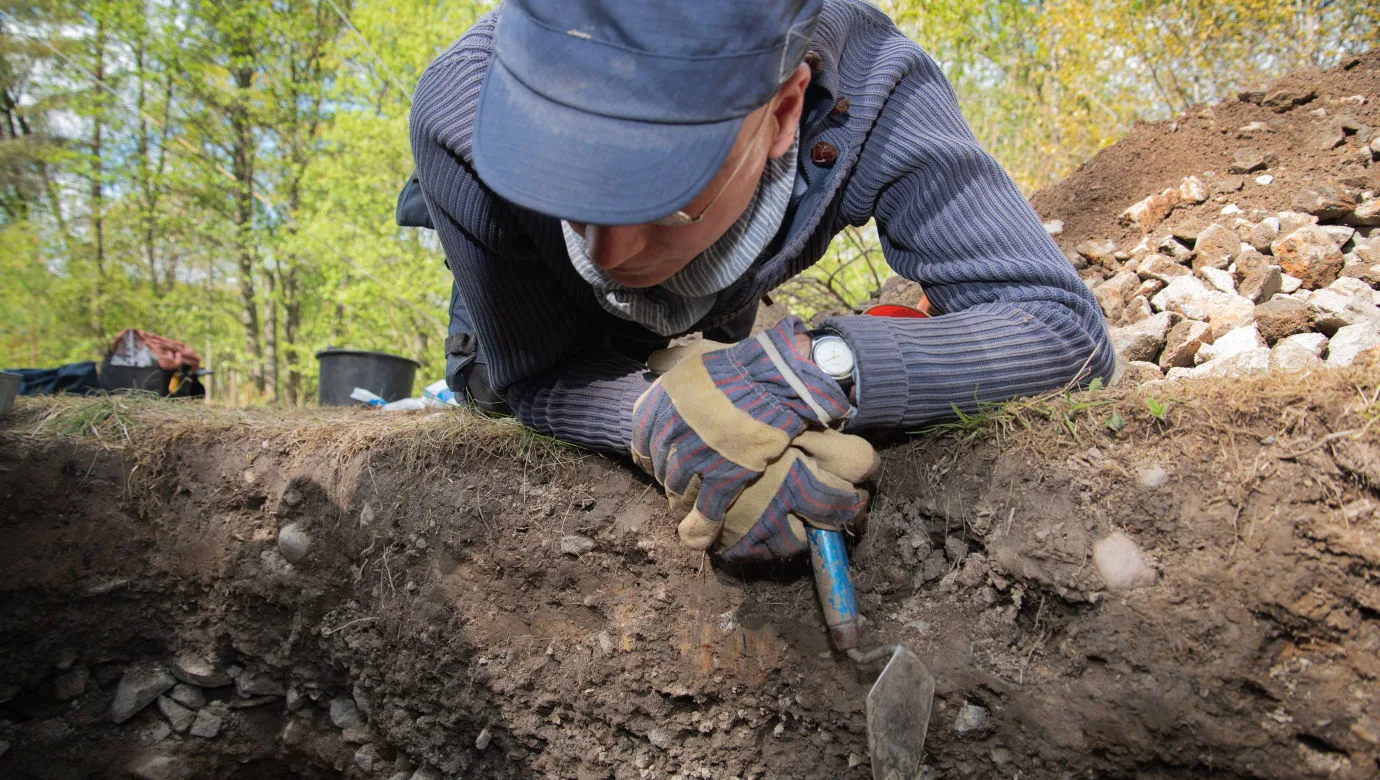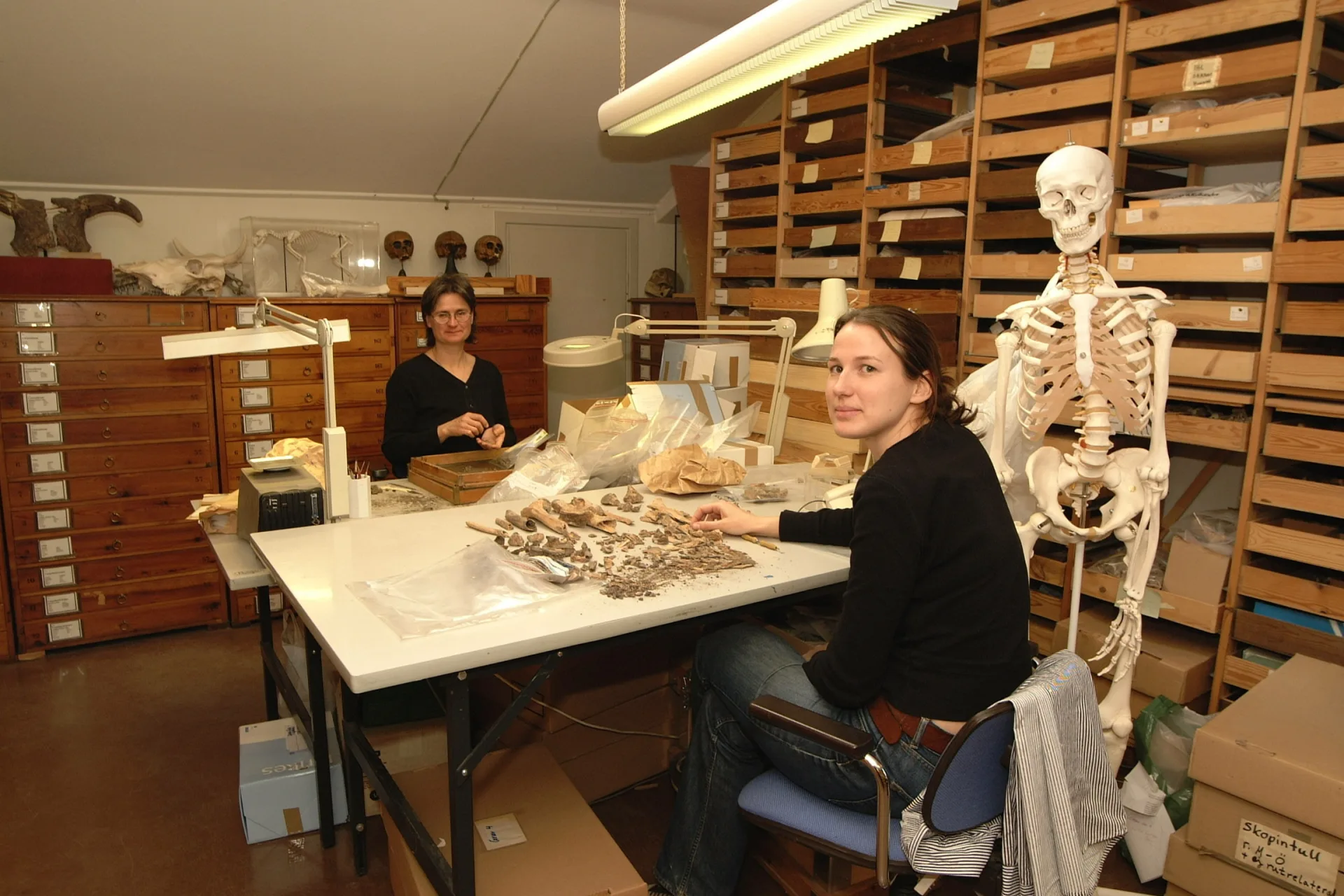How is the age of an object determined?
A relative dating determines whether an object is older or younger than another, while an absolute dating provides a more precise year or time period. Before the development of scientific dating methods in the 1950s, absolute dating could be achieved through finds such as coins. Today, the possibilities are far greater, with techniques like and dendrochronology (tree-ring dating) being the most common.
Different scientific methods are therefore used to date artefacts, helping establish their age and better understand historical developments. These methods assist archaeologists in interpreting how people lived throughout history.
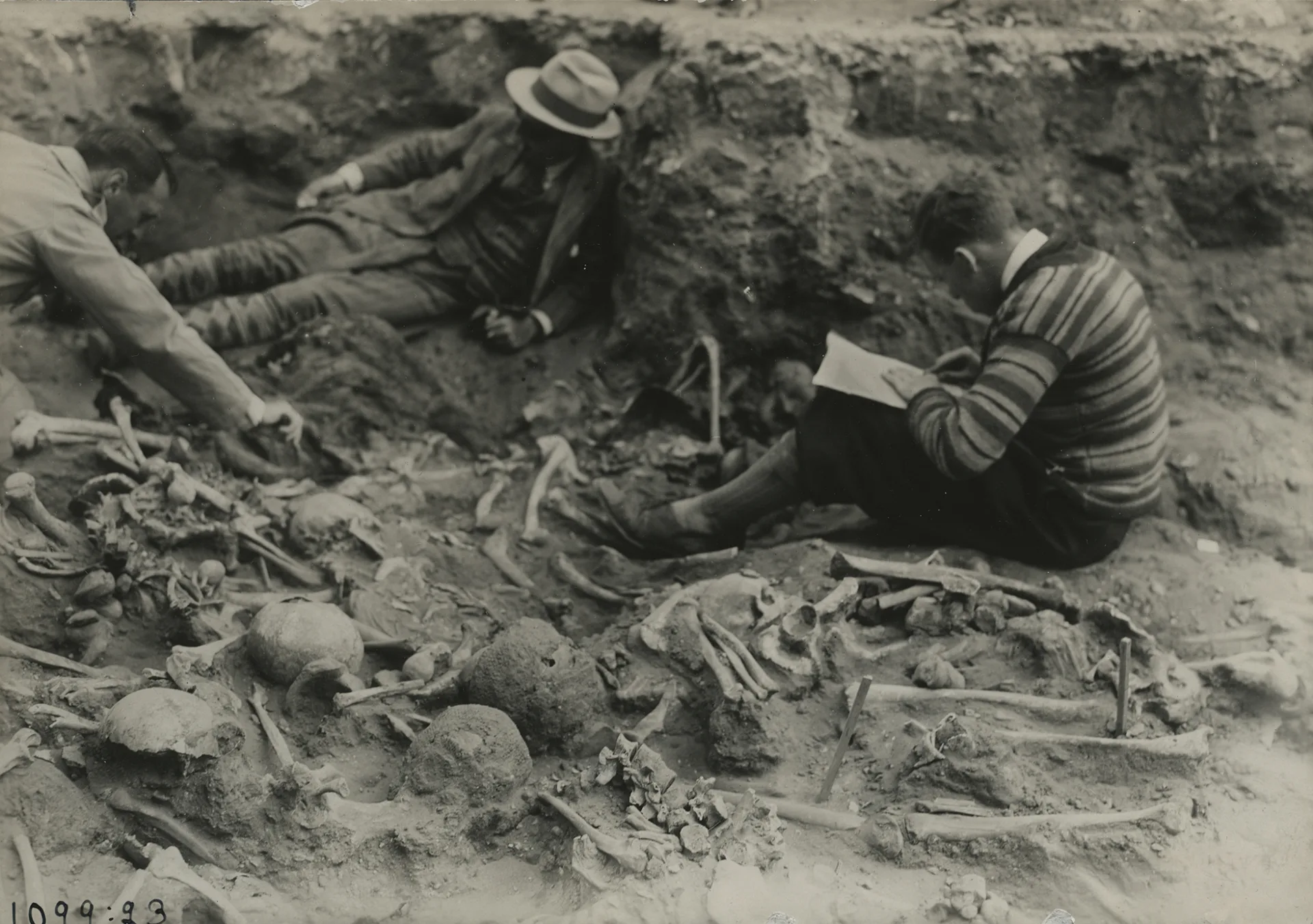
Relative dating
Stratigraphy
One method of relative dating is stratigraphy, meaning the study of layer sequences. A grave that lies above another is younger than the one below, and the same applies to settlement layers. By studying the composition of objects in a particular layer, grave, or deposit, known to be older or younger than another, a framework is created for how different archaeological cultures and artefacts relate to one another in time.
If archaeological material is found above or below certain geological layers, this too can help establish a relative date. Finds such as shells can be linked to different environmental phases; some species prefer freshwater, others saltwater, which reflect the Baltic Sea’s changing conditions throughout history.
Varve chronology
Another example is varve chronology, where annual clay layers deposited by melting glaciers have been linked into long sequences. This method, used by Gerard De Geer in the early 1900s, helped reconstruct the melting process of the last Ice Age.
Shoreline displacement
In Stone Age sites, shoreline displacement is another important relative dating method. As the ice sheet melted, the land began to rise, and ancient coastal settlements shifted along the changing shoreline. Therefore, sites or finds located higher in the terrain are often older than those found at lower elevations.
Typology
Typology is another form of relative dating. It is based on the principle that object styles evolve gradually, and similar-looking objects are likely from similar periods, while those differing greatly are further apart in time.

Absolute dating
Absolute dating methods allow for increasingly precise chronological placement of artefacts within these relative frameworks.
Dating humans, animals, and plants
The most widely used and significant absolute dating method is . It provides a date with a margin of error and is therefore approximate. The method is based on all living organisms absorbing small amounts of radioactive carbon-14 from the atmosphere, which stops at death (or when a tree is cut down).
Unlike other carbon isotopes, carbon-14 decays with a half-life of 5,730 years. By measuring the remaining amount of carbon-14 in a sample and comparing it to stable isotopes like carbon-12, scientists can estimate how long it has been since the organism died. Ideally, samples with low inherent age, such as grain or hazelnut shells, are chosen.
However, radiocarbon dating has several sources of error. Initially, it was believed that cosmic radiation levels, and thus C-14 production, were constant. One C-14 year equaled one calendar year. In the 1960s, it became clear that calibration was needed to align C-14 years with calendar years. Calibration curves have since been refined. Other factors, like conservation chemicals or marine diets (known as the reservoir effect), can also skew results, but modern methods now correct for these issues.
Dating ceramics
can only be used on organic materials. For materials heated above 500 degrees celsius, such as ceramics, thermoluminescence dating can be used. This method measures trapped electrons in minerals like quartz and feldspar, which release light when reheated, allowing scientists to determine when the object was last fired.
Beyond 50,000 years
only works for materials younger than about 50,000 years. Older fossils and rocks are dated using other radioactive decay methods, such as the uranium-lead method, though these are less precise. Magnetic dating and even DNA mutation rates are also used for older materials.
Dendrochronology
For younger materials, dendrochronology (tree-ring dating) can provide exact years. Climate variations produce unique growth ring patterns that can be matched with established sequences. If the outermost ring (near the bark) is preserved, the exact year the tree was felled can often be determined.
Dendrochronology requires relatively large wood samples and is often used on wooden constructions, such as the Alvastra pile dwelling or medieval shipwrecks in the Baltic Sea.
An example from the Swedish History Museum

Antler Adze
The so-called Ystad Adze, decorated with engravings.
On view at Historiska museet in the exhibition Forntider 1
One example of an object dated using radiocarbon analysis is an antler adze decorated with engravings of geometric patterns and two deer. In 2015, a small hole was drilled inside the shaft hole to collect powder for dating. The analysis gave a result of 6555 ± 45 BP (“before present,” or before 1950), corresponding to 5545–5475 BC (1 sigma) or 5620–5465 BC (2 sigma). This places the adze in the early late Mesolithic period, around 5500 BC.
Dating an object often requires destructive testing, such as drilling a small 5 millimetre holem so researchers must weigh the scientific value of obtaining an exact date against the importance of preserving the artefact intact.
